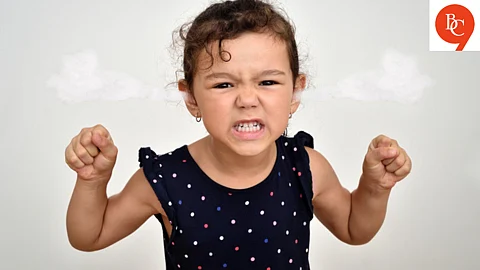

You laugh, you share, and maybe even tag a friend with “this is SO your cousin’s kid.” But then comes the double take: Wait… was that a toddler?
Children swearing used to be shocking. Now, it’s TikTok gold. But with swear words creeping into the vocabularies of kids younger than ever, parents, teachers, and psychologists are asking: Is this just harmless mimicry, or are we normalizing something that could be problematic?
The Internet’s Reaction: Cute or concerning?
Scroll through comment sections and it’s a mixed bag. Some users find it hilarious—“He said it with so much confidence”—while others raise alarms: “Why are kids this young even exposed to these words?”
We’re in an era where virality often trumps values. What was once taboo is now content, and swearing—especially when it comes from an unexpected mouth—is algorithm-approved. But when do these "funny" moments cross the line from comic relief to cultural red flag?
What the Experts Say: It’s Not Just About Language
According to child psychologist Dr. Anuja Kale, “Kids pick up swear words early not because they understand them, but because they sense the emotional power behind them.” Language development today starts earlier, thanks to digital exposure. Kids as young as three watch YouTube shorts, play online games, or overhear adult conversations that are peppered with casual profanity.
But here’s the kicker: Kids aren’t just repeating words—they’re also absorbing tone, emotion, and the intention behind those words. And that can affect how they handle frustration, conflict, and even empathy.
Is It Really a Big Deal?
The Case For “It’s Normal”:
Language evolves. Swear words are just another category of expression. Some argue that banning words doesn’t teach kids because those words hurt or matter. Instead, teaching context and boundaries—like “this is not okay to say at school or around elders”—is more realistic and respectful of kids’ intelligence.
The Case for Concern:
Swearing too young can desensitize children to aggressive language, leading to communication patterns based on confrontation instead of calm reasoning. Schools have reported more incidents of verbal aggression in lower grades, and some link that to media overexposure and unsupervised screen time.
The Media Factor: Swearing Is Now Casual Culture
From Peppa Pig memes with adult voiceovers to “family-friendly” YouTubers who sneak in swear-substitutes like “frick” or “shut it,” media aimed at young audiences often walks the line between innocent and edgy. Even cartoons like The Amazing World of Gumball or Rick and Morty (often watched by tweens) are laced with sarcasm and soft profanities.
Then there’s the real-world mimicry: parents swearing while driving, older siblings raging on Fortnite, or Alexa accidentally playing uncensored Spotify tracks. The filter’s gone, and kids are listening.
So, What Can Parents and Adults Do?
Don’t overreact. Shaming kids can make swearing more appealing as an act of rebellion.
Model better language. Kids mirror tone and words more than they mirror intentions.
Create “safe” vocabulary. Help them name their emotions in expressive but respectful ways.
Limit unsupervised content. Digital detox? Maybe not. But setting screen rules? Yes, please.
At the end of the day, a four-year-old saying a bad word isn’t the apocalypse. But what matters is whether we teach them the emotional weight of language. Swear words are part of adult vocabulary—not toddler vocabulary—for a reason. It’s not about purity culture or being “too sensitive.” It’s about emotional regulation, respect, and timing.
